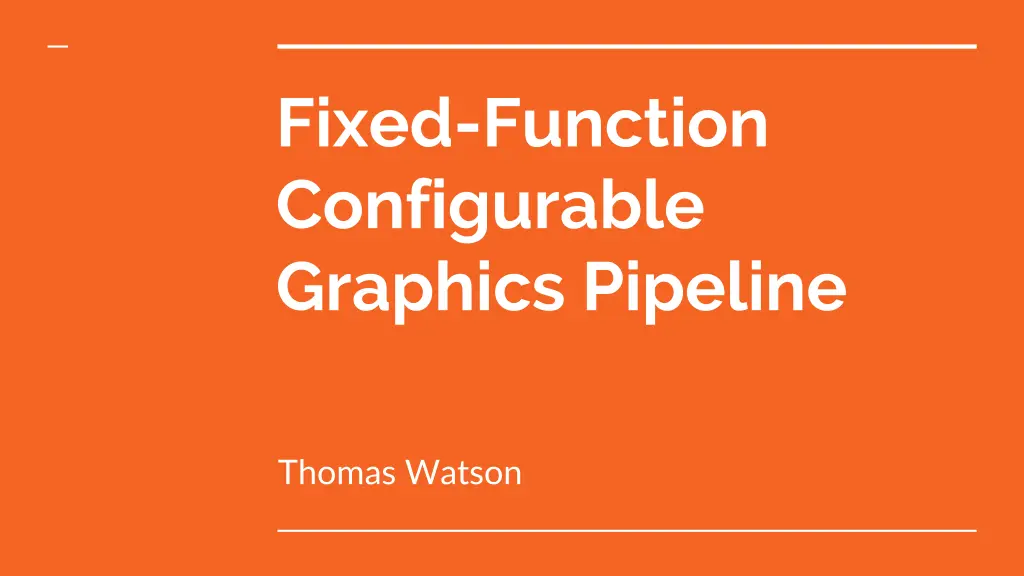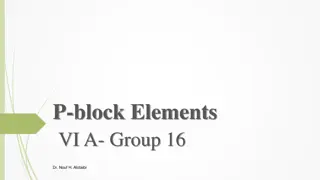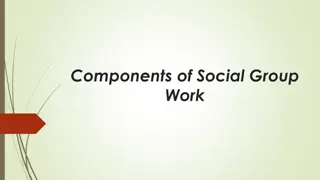
Configurable Graphics Pipeline Implementation Overview
Dive into the detailed process of configuring and implementing a graphics pipeline, from understanding how computers draw to the C++ implementation of each stage. Explore the idea of transforming triangles with lighting effects, frame buffering, and pixel output to the host system.
Uploaded on | 2 Views
Download Presentation

Please find below an Image/Link to download the presentation.
The content on the website is provided AS IS for your information and personal use only. It may not be sold, licensed, or shared on other websites without obtaining consent from the author. If you encounter any issues during the download, it is possible that the publisher has removed the file from their server.
You are allowed to download the files provided on this website for personal or commercial use, subject to the condition that they are used lawfully. All files are the property of their respective owners.
The content on the website is provided AS IS for your information and personal use only. It may not be sold, licensed, or shared on other websites without obtaining consent from the author.
E N D
Presentation Transcript
Fixed-Function Configurable Graphics Pipeline Thomas Watson
How do computers draw?
Idea: Triangles Input Stream like AudioProcessor Transformation RotLocScale with DSP48 Rasterization Point -> Line -> Triangles -> Lighting? Frame buffer None -> ??? Output Stream pixels to host
So you want hardware? Show me your algorithm first
C++ implementation of each stage Mock pipeline - beginning to think in terms of hardware as soon as possible. Structs can be like wires Standard library has FIFOs Iteration and debugging much faster in software
Triangle -> 3 vertices, one at a time
x x y y X + z z
mkConnectalTop | 7828(2.58%) | 7828(2.58%) | 0(0.00%) | 0(0.00%) | 10132(1.67%) | 0(0.00%) | 0(0.00%) | 10(0.36%) | under 13 ns 66 MHz at least
3. Notes Multiplication XiaoLin Wu's algorithm
Multiplication came for free...if we ask nicely Worked when output of multiplication went directly to register
Xiaolin Wu It's just drawing lines?






















